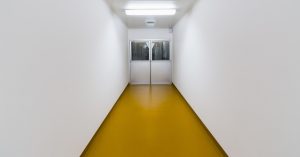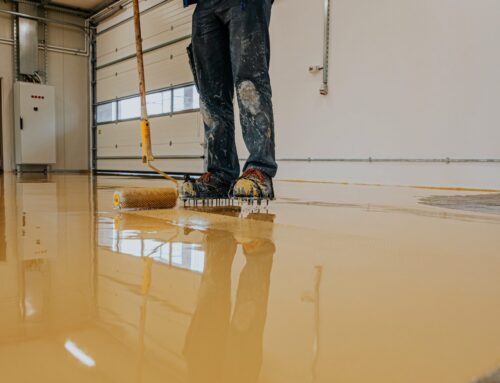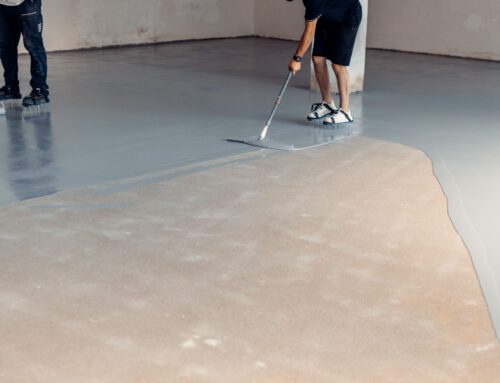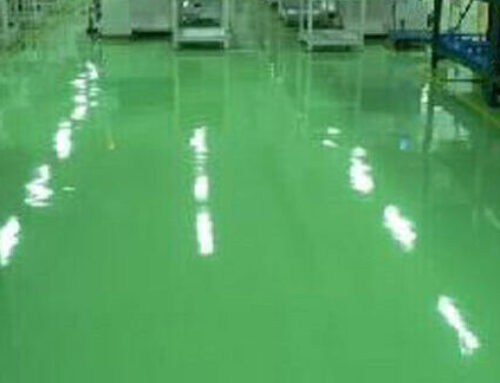
Epoxy flooring is hugely popular – and hot on its heels comes another excellent floor coating product, called polyaspartic.
Although it’s been around for a few decades, polyaspartic has traditionally been a more industrial product. It’s typically been used to coat large, metal infrastructures, such as bridges, ships and railcars, thanks to its incredible resistance to environmental conditions and abrasion.
More recently, polyaspartic has been embraced as a flooring product, providing an alternative to epoxy in certain situations.
But hey, we hear you say, epoxy has been touted as the all-singing, all-dancing solution for both interior and exterior situations. So why should consumers switch their allegiance to polyaspartic?
The simple answer to that is, “You probably shouldn’t”- well, not in many situations. Epoxy remains a high-quality, durable, simple-to-apply flooring and coating option that is and continues to offer incredible longevity and value for money.
Polyaspartic should be thought of as another alternative that – in certain circumstances – might be a better choice, especially for under direct sun conditions.
The case for polyaspartic flooring…
Although similar to epoxy, there are some significant differences between the two products, such as:
- The chemical makeup of polyaspartic is less rigid than epoxy. This makes it incredibly resistant to friction – so a good choice for the highest traffic (foot and wheeled) situations.
- Polyaspartic is wholly resistant to UV rays. It won’t shrink, yellow or discolour. In the balmy Aussie climate, this attribute makes it an excellent choice for exterior installations.
- In its pure form, polyaspartic cures to a smooth surface, meaning it needs to have traction additives to create a non-slip surface. Epoxy isn’t so slippery – although many people also add non-slip coatings to this as well.
- Polyaspartic cures quickly – as fast as 2-4 hours – in ambient temperatures. It can withstand full use – including heavy machinery and traffic – after only 12 hours. Epoxy takes a little longer to cure – you can walk on it after about 12 hours but need to wait up to 24 hours before heavy use.
- It has its own characteristic odour and has very low VOCs (volatile organic compounds). Epoxy is also odourless with little off-gas when being applied, so, in non-ventilated areas, we recommend to wear breathing masks.
- Polyaspartic is more expensive than epoxy.
The addition of polyaspartic flooring into the mix provides consumers, designers and planners with another option. The case for polyaspartic in outdoor areas is extremely strong – it’s a popular choice for swimming pools, ice baths, patios and decks, external stairs, garages, driveways and more.
One consideration is the application process. While epoxy, with its gentle curing time, is a forgiving surface for the DIYer to apply. Polyaspartic, on the other hand, requires expertise and a confident approach as it’ll be dry before you know it.
There are pros and cons for both surfaces. But one thing’s for sure. The popularity of both is increasing exponentially – and with good reason. They are:
- Customisable: Each comes in virtually any colour or shade you choose. You can also have a choice of finishes (such as flaked or quartz) and even add demarcation as required.
- Incredible longevity: Both will happily last 15+ years.
- Easy maintenance: Keep them clean with a mop and water. Both are resilient to virtually any cleaning chemical and, because they’re poured, rolled, or squeegeed into place, you have a seamless floor with no gaps where dirt, dust or bacteria can gather.
- Can be used inside and outside: Perfect in isolation or great if you want to extend an interior theme into the garden, yard or outdoor area.
- They look great! Both types provide an aesthetically pleasing finish that can be tailored to fit in with any required design.
Shimicoat offers a wide selection of polyaspartic and outdoor coatings, plus full instructions on installation and loads of product information and FAQs in our Shimi University.
Our highly experienced team is on hand to answer any questions you might have and advise on your choice between polyaspartic or epoxy. Contact our team today or use our quote calculator to find out more information.





